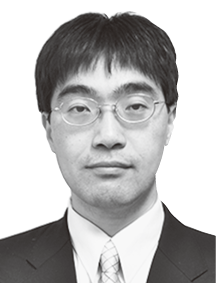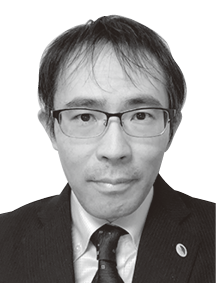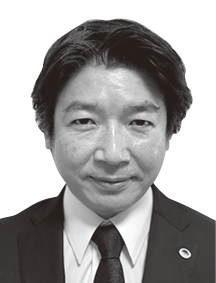Advances in the use of high-volume data and digital technologies such as 5G and AI are happening amid an accelerating pace of global change, including COVID-19, abnormal weather events, and digitalization. At the same time, people have started talking about new forms of governance that can cope with the speed of these changes, with particular emphasis being placed on the importance of establishing trust. In Society 5.0, meanwhile, where change is the default condition, all sorts of unforeseen circumstances can potentially arise. Hitachi has been pursuing research and development aimed at establishing this trust by incorporating functions into services and society that minimize impacts. This article describes the research and development of the core technologies and architectures for systematically building trust in the services and societal systems that underpin Society 5.0.




The world has been confronted with changes of unprecedented rapidity over recent years, including COVID-19 and abnormal weather events. In terms of technology, COVID-19 has prompted an acceleration of digitalization and progress is being made in the use of high-volume data as well as innovative technologies such as fifth generation (5G) mobile communications and artificial intelligence (AI). At the same time, people have started talking about new forms of governance, with failures to maintain social order becoming more common as past governance practices have been unable to keep up with the speed of these changes(1), (2). This debate has emphasized the importance of establishing trust, with talk about the need for achieving trust-building mechanisms based on trustworthiness through transparency and verifiability.
Recognizing these trends, Hitachi has been working on research and development that targets the systematic building of trust in the services and societal systems that underpin Society 5.0(3). In Society 5.0, where change is ever-present, all sorts of unforeseen circumstances can arise, this work aims to create services and societies that are worthy of trust by building into them functions for minimizing the impact of these unexpected events.
The following section describes technical developments aimed at providing services that are worthy of trust. This is followed in the third section by details of a new architecture of society, services, and systems (S3) that views society as a whole in terms of these three different views and uses data to enable them to function in parallel.
Figure 1 — Trust by Data and Trust of Data
 Trust by Data refers to the use of data to establish trust while Trust of Data refers to ways of demonstrating that data is itself trustworthy.
Trust by Data refers to the use of data to establish trust while Trust of Data refers to ways of demonstrating that data is itself trustworthy.
Services in Society 5.0 will need to deliver more than just safety and security if they are to earn public trust. This is because trust is subjective, referring to the expectations that a particular entity (person or service) holds for other such entities. The fostering of trust requires not only that a service be trustworthy, but also some means by which it can accumulate and make known evidence that attests to this trustworthiness.
Hitachi has been researching and developing methods for collecting and presenting this evidence of a service’s trustworthiness from monitoring logs and other such data (Trust by Data) and also for demonstrating that this data is itself trustworthy (Trust of Data) (see Figure 1).
The following sections describe research on three topics that represent the core technologies for Trust by Data and Trust of Data.
Running a business involves a variety of risks such as delivery delays, product defects, and compliance issues. Hitachi is developing ways of analyzing data collected from sources such as Internet of Things (IoT) devices to visualize and control these risks as a means of building Trust by Data. The aim is to use this to improve trust in business by, for example, using video or other sensor data to confirm that production processes are being performed in accordance with procedures in order to improve quality in a supply chain.
Figure 2 — Use of PBI for Electronic Signatures
 PBI can be used to create electronic signatures (public key authentication) in which biometric information serves as the private key. Because no private keys are stored, no mechanism for doing so is needed.
PBI can be used to create electronic signatures (public key authentication) in which biometric information serves as the private key. Because no private keys are stored, no mechanism for doing so is needed.
People are asked to provide personal data in a wide range of areas, including in banking, healthcare, and travel. Responding to rising calls for privacy protection, notable moves have been made toward strengthening the regulation of personal data management (including personal information), such as the General Data Protection Regulation (GDPR) in Europe and the California Consumer Privacy Act (CCPA) in the USA. This has led to discussion of self-sovereign identity (SSI) in which users are empowered to manage their own personal data without relying on specific administrative agencies. One way of implementing SSI that is being talked about is decentralized identity (DID), whereby users control the disclosure of their personal data held in a blockchain.
As the blockchain uses an electronic signature to confirm the link between users and their recorded personal data, this involves the handling of a private key. Unfortunately, the complexity of this key management is a problem in practical use. Hitachi, however, has found a way of overcoming this problem by using public biometric infrastructure (PBI) to generate electronic signatures from biometric information. As PBI allows biometric information to be used as the private key, it frees users from the trouble of managing their own keys while also eliminating the risk that the private key will be lost or stolen(4) (see Figure 2). This serves as a means of providing Trust of Data that is applicable to personal data.
Figure 3 — Example Application of VDS Technology to SOCs
 Cyberattacks can be identified by extracting only that information from security logs that is held by all of the SOCs.
Cyberattacks can be identified by extracting only that information from security logs that is held by all of the SOCs.
A shift is taking place toward leveraging data as a source of value, with potential being seen in the distribution and use of the various forms of data generated by IoT devices in the field. Unfortunately, in cases where the data may contain confidential material, requirements such as the need to keep track of its distribution and use pose a serious barrier to putting this data to work.
Hitachi has succeeded in lowering these barriers by processing data in place rather than transferring it elsewhere for use. This is called verifiable decentralized secret analysis (VDS) and combines functional encryption with distributed processing. VDS enables the early detection of cyberthreats by, for example, comparing confidential security information held across a number of security operation centers (SOCs) to extract only that information common to all centers, without decrypting the data(5), (6) (see Figure 3). This improves security by keeping to a minimum the amount of security information that is shared. This serves as a means of providing Trust of Data that is applicable to confidential data.
Figure 4 — System Configuration Concept
 It is difficult to keep up with the diverse needs of a society that is constantly changing when using existing system configurations that operate in accordance with legally stipulated rules. Instead, there is a need to separate goals and services from systems.
It is difficult to keep up with the diverse needs of a society that is constantly changing when using existing system configurations that operate in accordance with legally stipulated rules. Instead, there is a need to separate goals and services from systems.
If Society 5.0 is to provide a richer way of life that is also safe and secure, it will be necessary to develop and deploy innovative technologies on trusted data access platforms that incorporate the practices described above, with governance that happens organically and functions effectively for society. Hitachi is working on the research and development of standard architectures for achieving this. Figure 4 shows the concept behind future system configurations. It is difficult to keep up with the diverse needs of a society that is constantly changing when using existing system configurations that operate in accordance with legally stipulated rules. What is needed are S3 architectures that view society as a whole in terms of these three different considerations, having the flexibility to set goals while gaining a consensus among the stakeholders in a service (society), with new services able to achieve trustworthiness quickly (service), and with resilience and the ability to change how services operate (system) (see Figure 5). This involves the sharing of goals and data based on trusted data made available on data access platforms to create a future-proof society with repeated cycles of trial and evaluation for society, services, and systems. The functions described below will need to take account of the above three views, with development already in progress aimed at achieving this.
Figure 5 — S3 Architecture
 The architecture enables the creation of a future-proof society by working through repeated cycles of trial and verification for society, services, and systems (S3), sharing societal goals and data by means of trusted data access.
The architecture enables the creation of a future-proof society by working through repeated cycles of trial and verification for society, services, and systems (S3), sharing societal goals and data by means of trusted data access.
Society 5.0 seeks to create a human-centric society, recognizing among other things the importance of combining economic growth with improvements in the quality of people’s lives. This calls for national and local government agencies not only to set targets using macro indicators, but also to play a role in using digital technology to achieve them.
Hitachi is looking at using the concept of quality of life (QoL) to incorporate this human-centric philosophy into how it assesses different aspects of society, such as people’s state of health or the condition of traffic, transportation, buildings, and other facilities. This will make it easier for the design and operation of services to take account of decisions made by government agencies that prioritize being human-centric. Recognizing the diversity of society, Hitachi will use evaluation techniques based on key performance indicator (KPI) models that consider large numbers of stakeholders, enabling tie-in with government decision-making, namely policies and the development of social services.
Advances in digital technology are facilitating interoperation between the different systems operated by companies or local government and making possible the rapid development of diverse innovations that are beneficial to people and society. At the same time, however, bottlenecks arise in ensuring availability and verifying the security of interoperation between different systems or across different industries. These are an impediment to getting this to work in practice.
The S3 architecture includes a sandbox platform for dynamic service evaluation that can collect and analyze multiple layers of data in real time on things like the status of working systems, their operation (control), and people’s circumstances. By doing so, the platform can assess the security and availability of services or operational functions in cyber physical systems (CPSs) or elsewhere in the field. Through the dynamic trial and verification of innovations, linking with the society and system views, this allows for agile service deployment that delivers improvements in QoL by progressively rolling out functions once they complete testing.
Rapid deployment and delivery will be essential in Society 5.0 where change is expected to be the norm. Rather than waiting for the time it takes to provide new social infrastructure, this makes it more important than ever that new services are able to repurpose the functions provided by existing infrastructure. This requires the easy unbundling and rebundling of functions and their resilience to change so that their operation as social infrastructure is not interrupted. This in turn calls for ways of implementing the functions of existing social infrastructure as software models in cyberspace and of linking these models together. Hitachi calls this operation virtualization and is currently working on development. Operation virtualization improves the resilience of services as a whole. When a problem in some part of the social infrastructure causes it to shut down, for example, services can be kept running using the alternative infrastructure provided by the software model. To give a practical example from manufacturing and distribution, when factories suffer from lost production due to bad weather or other such events, this approach would respond by having a new alternative value chain quickly swing into action, coordinating the operation of other factories to maintain service continuity in a way that is resilient to such problems.
This article has described the research and development of systematic ways of building trust in the services and societal systems that underpin Society 5.0.
In the future, Hitachi intends to incorporate functions for building trust into actual services and societal systems, including the practices described in this article. By drawing on the knowledge acquired though this research and development and from its practical application, Hitachi also hopes to contribute to achieving a consensus on how best to build trust in Society 5.0.